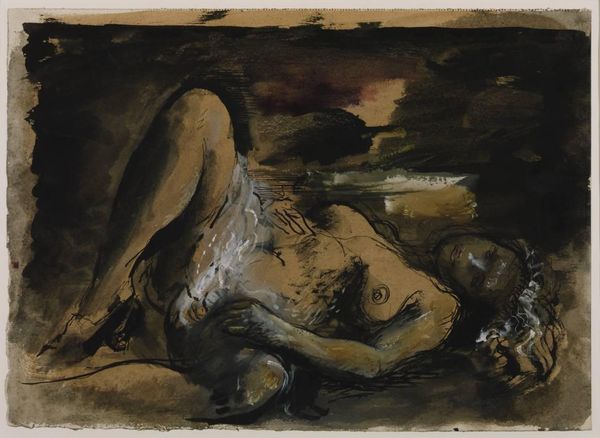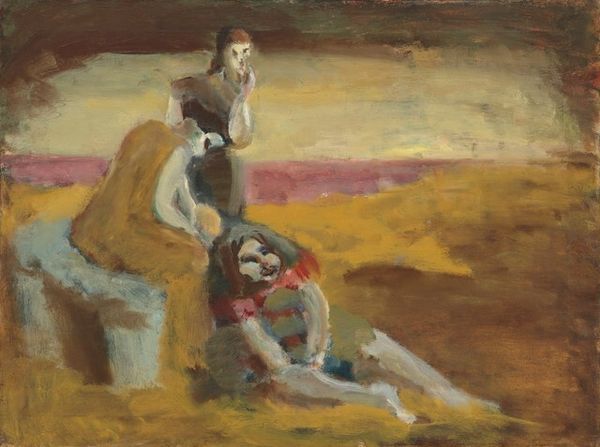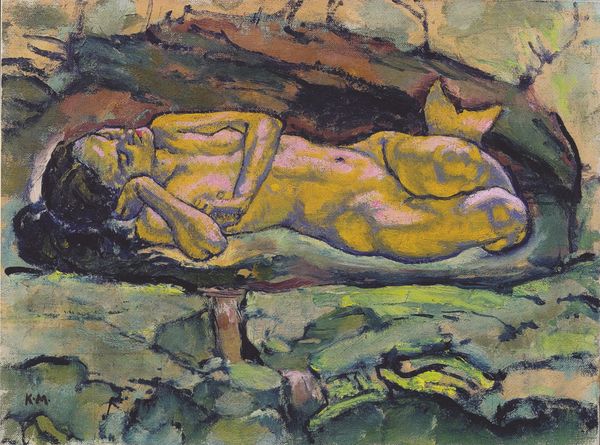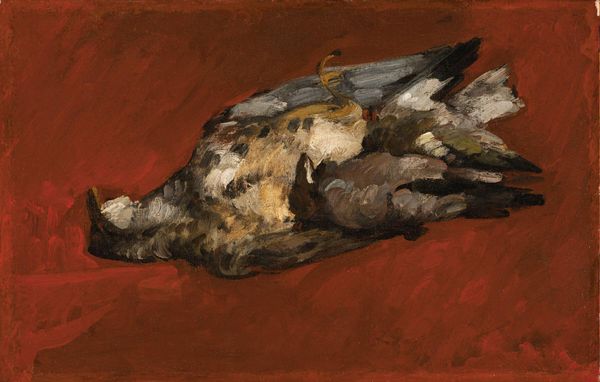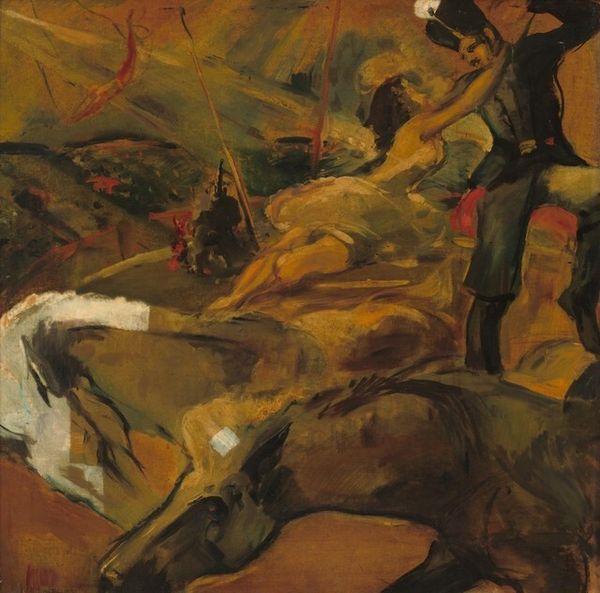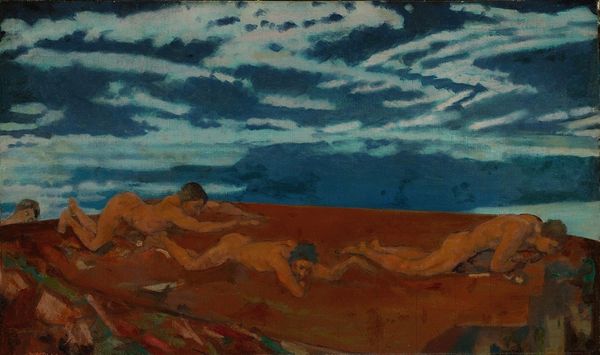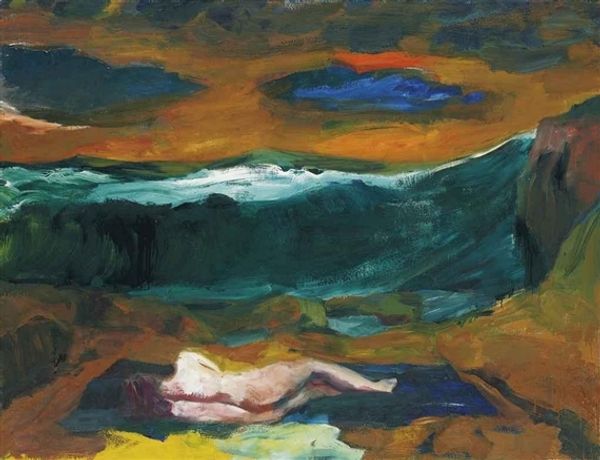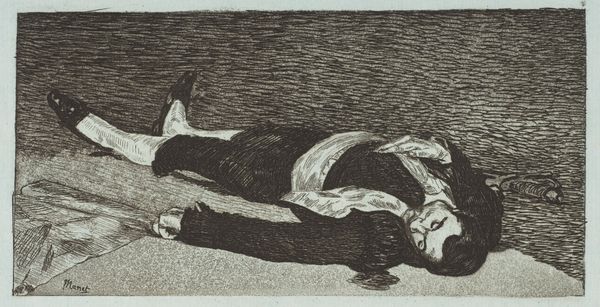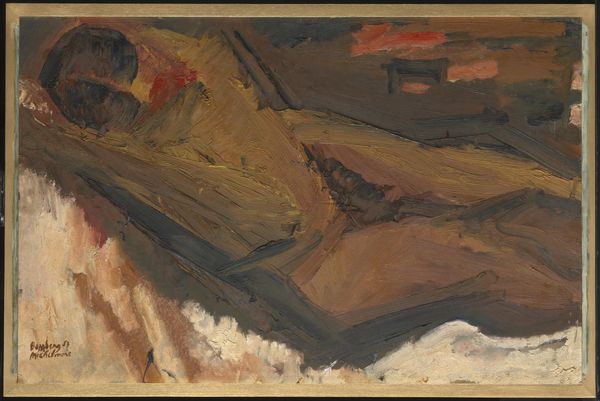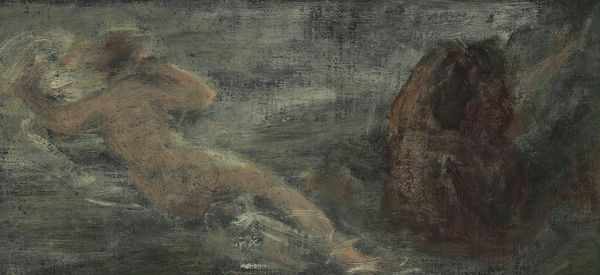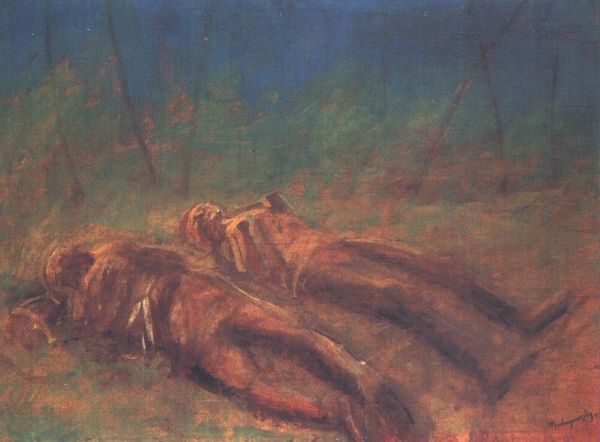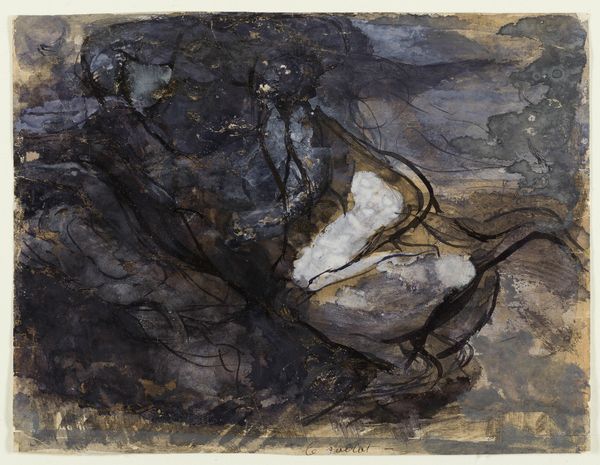
Dimensions: support: 1730 x 1299 mm
Copyright: © The Estate of Karl Weschke | CC-BY-NC-ND 4.0 DEED, Photo: Tate
Curator: Karl Weschke's "Body on the Beach" presents us with a supine figure against a stark landscape; its size is quite considerable at 1730 by 1299 mm. Editor: My initial impression is one of desolation; the earthy palette and the seemingly abandoned body evoke a sense of profound isolation and vulnerability. Curator: Weschke often explored themes of alienation and the human condition within post-war society. The visible brushstrokes and the almost crude rendering of the figure point to the physical act of its creation and its materiality. Editor: Absolutely. Consider how the artist positions this figure within the vast expanse, perhaps reflecting feelings of displacement and existential angst common in the 20th century, especially considering the historical backdrop of conflict and social upheaval. Curator: The rough texture suggests that Weschke was really interested in conveying tactility, the grit of the beach itself. One can almost feel the coarseness of the sand beneath the figure. Editor: Right, and it begs questions about the body's identity. Is it a victim? A refugee? Weschke leaves it open, prompting us to confront our own assumptions about suffering and marginalization. Curator: Reflecting on Weschke’s process certainly deepens my appreciation for the tactile experience of the piece. Editor: Indeed, it pushes us to contemplate our place within a world marked by conflict and displacement.
Comments
tate 7 months ago
⋮
http://www.tate.org.uk/art/artworks/weschke-body-on-the-beach-t03287
Join the conversation
Join millions of artists and users on Artera today and experience the ultimate creative platform.
tate 7 months ago
⋮
Weschke painted this in his Cape Cornwall studio. Its theme relates to an accident the artist had while diving for lobster pots, forcing him to make an emergency ascent from one hundred and twenty feet under the sea. He was placed on the beach by his companions and as he lay there recovering, he said he felt like a piece of meat. Originally the painting was much brighter but Weschke felt that the colours were too theatrical. He commented that the painting is about 'a person in the ultimate situation of distress.' Gallery label, March 2024

